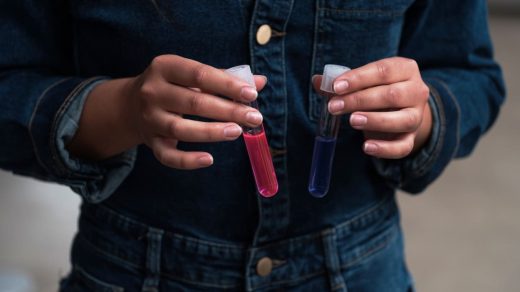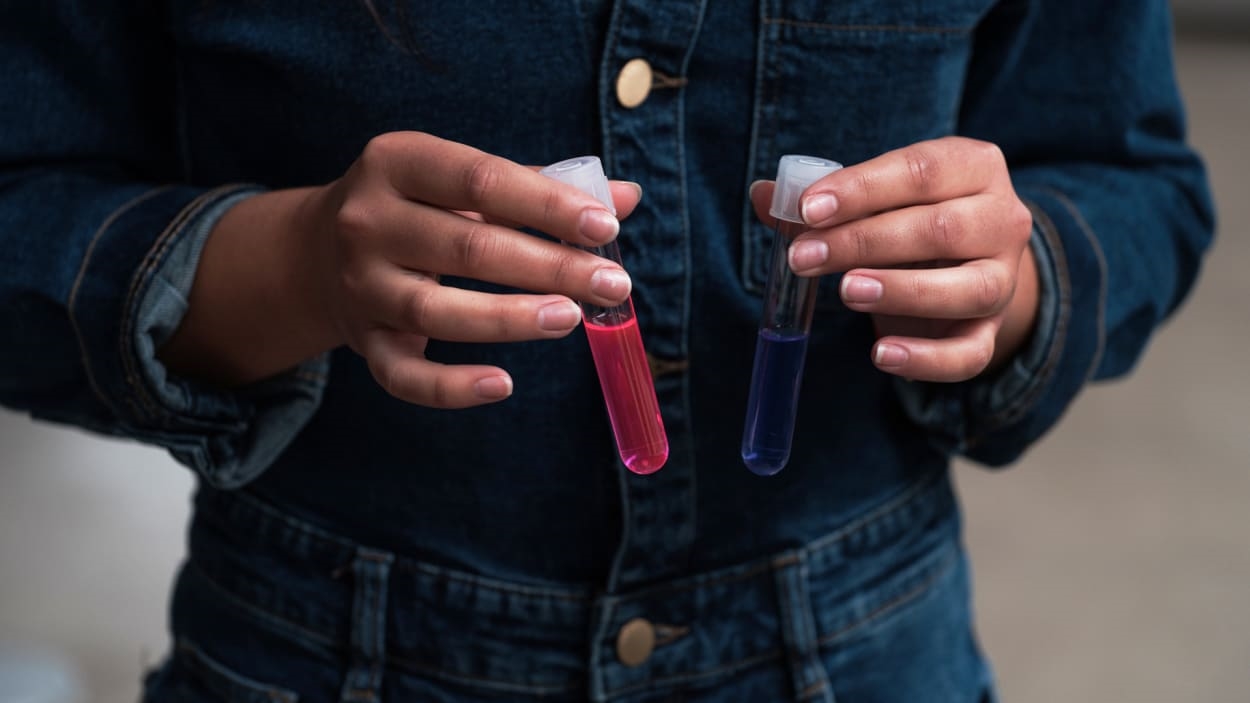This biotech startup wants to color your clothes with natural proteins—not toxic dyes
As a student at the Fashion Institute of Technology five years ago, Chiu-lian Lee couldn’t stop thinking about the environmental impact of the fashion industry, from greenhouse gas emissions to toxic dyes and other chemicals used to finish fabric. “I was really frustrated about the status quo of how textiles were being made,” she says. She joined a biodesign program to begin exploring alternatives. At a nearby lab they visited, she and fellow students were struck by a bright pink fluorescent vial of proteins.
“That vial really captivated us—how nature can create functionality and color through protein structure,” Lee says. The proteins occur naturally in coral, and scientists make use of the fluorescent color to mark samples as they do research. The same color, the students realized, could also be used in textiles. And by tweaking the DNA of the protein, it’s possible to make other colors. “You change the shape of the protein, and that’s how you can change the color, essentially,” she says.
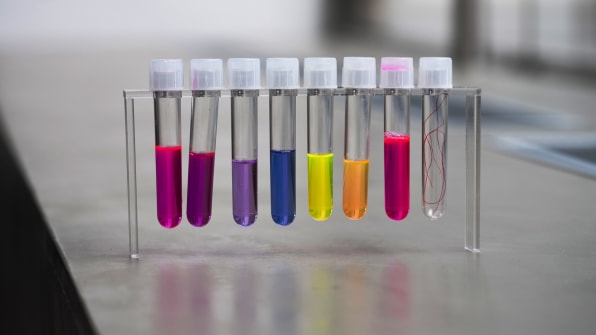
Dyeing fabric is a major source of pollution. In countries where much of the world’s clothing is produced, it’s not uncommon for factories to dump untreated wastewater filled with toxic dye into rivers, even when there are laws prohibiting it. In Indonesia, for example, the Citarum River has been heavily polluted by the hundreds of textile factories along its banks.
Nearby, farmers use the water to irrigate rice fields and for livestock, despite high levels of chromium, lead, cobalt, and other heavy metals from the dye. (Heavy metals are sometimes used to help make colors more vibrant and long-lasting.) Pollutants from dye can also accumulate in fish, then move up the food chain.
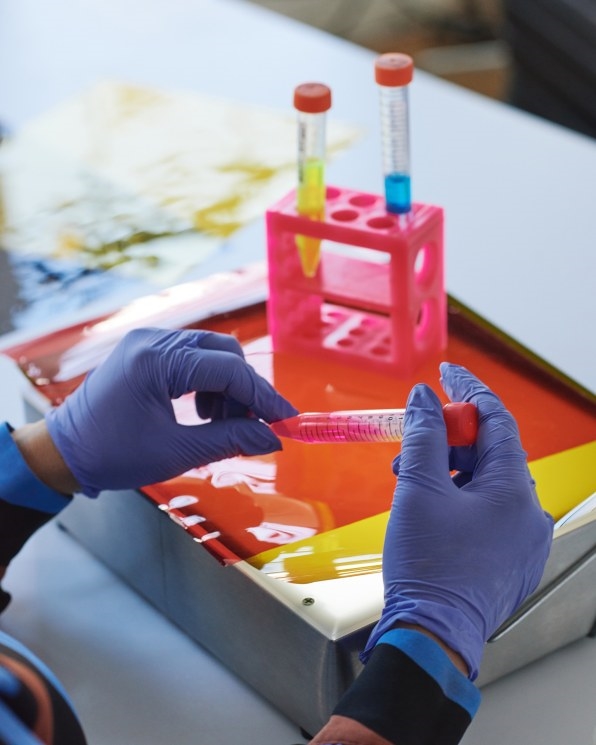
The colored proteins, by contrast, can safely biodegrade. Working with advisors, the students began making the proteins using microbes in bioreactors. Then they developed a new way to connect the proteins to fibers (the fibers are made from agricultural waste, so the entire product can have a minimal impact). They launched a startup called Werewool to begin to bring the fabric to market.
With a new seed round of funding from Material Impact and Sofinnova Partners, they’re now working on turning their first prototypes, tiny pink fibers, into textiles that could eventually be used by the fashion industry. The first step is another iteration of the fibers. “We’re hoping to have a pilot product in the next 12 months,” says Lee. “Those will be neon pink protein fibers for your biodegradable pink yoga pants.”
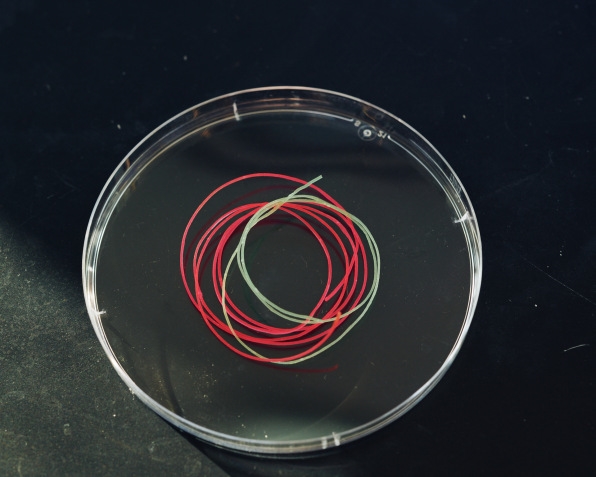
The same approach could also be used to replace other chemicals that are used to coat textiles. “In principle, what we do is we engineer proteins,” says Theanne Schiros, a professor at FIT and research scientist at Columbia University who advised the students and then cofounded the startup, becoming its chief science officer. “We identify an organism in nature with a property we’d like in our textile, we find the DNA sequence that encodes for it, and then we redesign it. We’re working with color proteins, but there is an amazing library of over 8 million proteins really to date of nature’s biodiverse organisms, with amazing biofunctionality.”
Wasps, for example, evolved a gene that encodes for a protein that’s waterproof; other proteins have stretch or are naturally antimicrobial. “What we’ve developed is a platform technology,” says Schiros. “Engineered protein structure provides an inherent property in the material and cuts out the need for petrochemicals or toxic dyes.”
(19)

